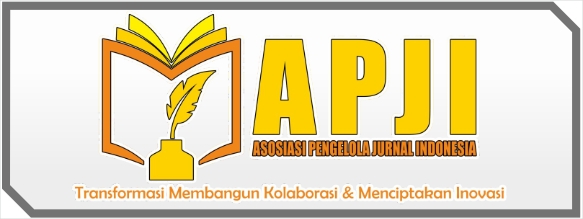PERSEPSI PEMILIH TENTANG KAMPANYE KOTAK KOSONG : KASUS BERITA TIRTO.ID PADA PEMILU 2024
DOI:
https://doi.org/10.59024/jis.v3i1.1035Keywords:
Empty box, Massa media, CampaignAbstract
shows that there are segments of society who feel they are not represented by the existing candidates. The high number of blank ballots indicates that many voters are dissatisfied with the choices available, so they choose not to vote for a candidate at all. This is a clear signal for political parties and candidates to listen more to the voice of the people. The implementation of campaigns is regulated in National Security Council Decree Number 11640 dated 2 May 1955. This decision does not determine the period for the campaign, but only states that the campaign ends the day before the voting. In Indonesia, the "empty box" phenomenon in general elections is an important issue that reflects the political dynamics and challenges faced by the democratic system. The empty box is one of the choices that voters can make in general elections when they feel there is no worthy candidate to nominate. In the context of the Pilkada, an empty box is not just an option not to vote, but a symbol that represents deep dissatisfaction with the existing candidates and the prevailing political system. With an empty box, people can express their dissatisfaction directly and signal to the political system that they want change, including a symbol of protest against candidates and a boost to political awareness. In this case, the mass media plays an active role in distributing information as an intermediary for the community using communication tools.
References
Basnursyah (2024) bagaimana-jika-kotak-kosong-yang-menang-di-pilkada
Berger, PL, & Luckmann, T. (1966). Kontruksi sosial Realitas: "Sebuah Risalah dalam Sosiologi Pengetahuan". Anchor Books.
Dani Setiawan, Masyarakat dan Demokrasi (Jakarta: Penerbit Ombak, 2017).
Diana Rizky (2024).perludem-kini-kotak-kosong-di-pilkada-di mainkan-elite-untuk-bodohi-rakyat
Dr. Drs. M. Zubakhrum B. Tjenreng, M.Si, Demokrasi di Indonesia Melalui Pilkada Serentak, (Jakarta: Papas Sinar Sinanti, 2020)
Firdaus, M. (2018). Kepemimpinan dalam Era Desentralisasi: Tantangan dan Peluang. Jakarta: Penerbit Salemba Humanika.
Khayriyah, S.IP., M.H.I, Didi Rahmadi, S.Sos, MA, dan Riko Riyanda, S.IP., M.Si. Monograf Kotak Kosong dan Krisis Demokrasi: Studi Kasus Pilkada Serentak Kabupaten Pasaman Tahun 2020.
Khayriyah, S.IP., M.H.I. Monograf Kotak Kosong dan Krisis Demokrasi. Jakarta: Penerbit Ombak, 2022
Luthfi Assyaukanie, Politik Identitas di Indonesia (Jakarta: Penerbit Graha Ilmu, 2016).
Miftah Thohir, Politik Lokal dalam Era Desentralisasi (Jakarta: Penerbit Alfabeta, 2016).
Norris, P. (2000). Lingkaran kebijakan :"Komunikasi Politik dalam Demoikrasi Pasca Industri".
Prasetyo, E. (2020). Demokrasi dan Partisipasi Publik: Analisis Pemilih dalam Pilkada 2017.Yogyakarta: Penerbit UGM Press.
Rizal Mallarangeng, Reformasi Politik: Dari Orde Baru ke Era Demokrasi (Jakarta: Penerbit Kompas, 2015).
Surbakti, Ramlan. (2010). Memahami Ilmu Politik, Jakarta: Grasindo.
Varma, SP. (2007). Teori Politik Modern, Jakarta: Rajawali Pers.
Wall, A. dkk. (2006). Desain Penyelenggaraan Pemilu. Buku Pedoman Internasional IDEA.
Widodo, H. (2015). Perselisihan Hasil Pilkada Serentak. Edisi 1. Jakarta: Sinar Grafika.
Yusuf, A. (2020). Kepemimpinan Publik dan Akuntabilitas di Indonesia: Pelajaran dari Pemilu.Bandung: Penerbit Alfabeta
Pustaka yang berupa jurnal ilmiah
Entman, RM (1993). "Framing: Menuju Klarifikasi Paradigma yang Retak". Jurnal Komunikasi, vol 43 (4).
Iffa Auliyal, Inki Azir2, Intan Tri Utami3, Muhammad Thoriq Aziz4, Pia Khoirotun Nisa5 MUKASI (Jurnal Ilmu Komunikasi) Vol. 3 No. 2 (2024) 154-164 Lisensi: Creative Commons Attribution 4
.Kesuma, Ulfa, and Ahmad W. Hidayat. "Pemikiran Thomas S. Kuhn Teori Revolusi Paradigma." Islamadina, vol. 21, no. 2, Sep. 2020, pp.166-187
Lippman, W (1922). Opini public. New York : Harcourt, Brace and company. Lippman in his work explain that public opinion is formed from the images presented by the media, which can influence people's attitudes and actions towards various sosial and political issues.
Downloads
Published
Issue
Section
License
Copyright (c) 2024 JURNAL ILMIAH RESEARCH AND DEVELOPMENT STUDENT

This work is licensed under a Creative Commons Attribution-ShareAlike 4.0 International License.




















